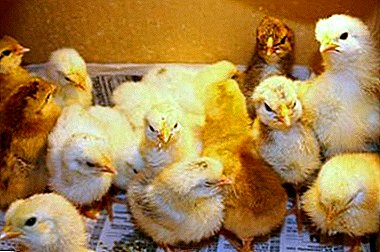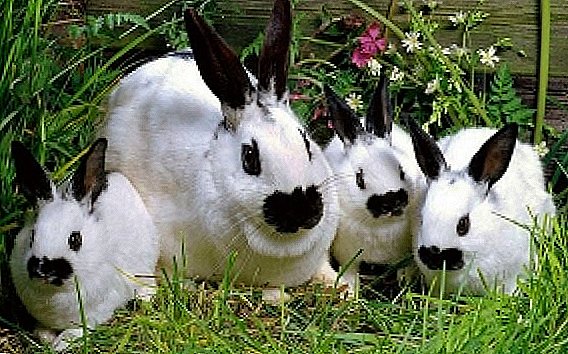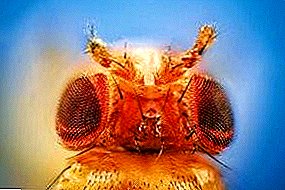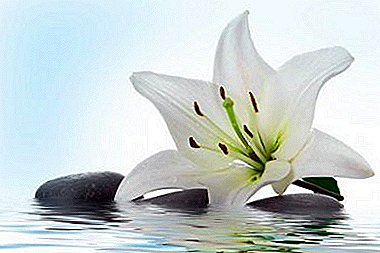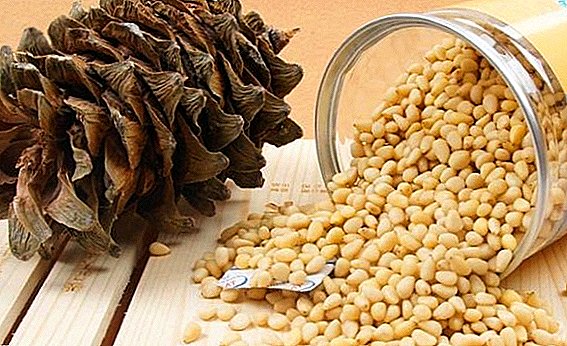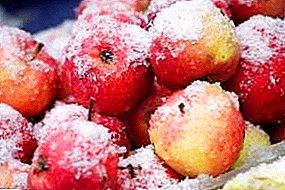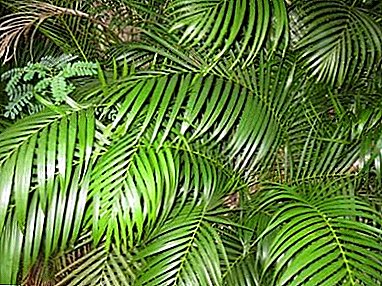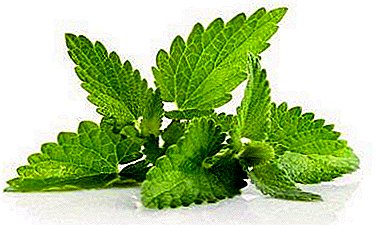
You can often hear the erroneous view that mint and lemon balm are two different names for the same plant.
However, experienced gardeners and connoisseurs of spices never confuse them. Do not allow such a mistake, and all those who read this article to the end.
Consider what lemon balm is and how it differs from other spicy herbs - peppermint, which plants have properties, what is their benefit or harm, and much more.
Is it the same or not?
On the territory of Russia, one type of lemon balm is distributed - Melissa officinalis, but there are much more popular types of mint. All of them, including peppermint, have nothing in common, except for belonging to the same family, with melissa.
Why are they confused?
This confusion is due to the relative external similarity, similar notes of aroma and the prevailing opinion about the benefits of these herbs for the human body. Misleads and popular name of lemon balm - lemon mint, bee mint, but it is absolutely incorrect names in terms of biology.
What is the difference in appearance?
How to distinguish these two plants in appearance? At first glance, mint and lemon balm are similar, but if you look closely, you can see a lot of differences between them: how the grass blooms, how it smells, and how it tastes. Consider more.
- Stalk and height. Mint has an upright stalk, and Melissa is branched, that is, several equally developed shoots. The height of mint can reach 1 meter, but more often it does not exceed 50 centimeters, and the lemon balm bush can reach a height of 1.5 meters.
- Flowers. In mint flowers are collected in inflorescences, resembling an ear in appearance, their color is close to purple. The flowers of the lemon balm form false rings of 6 - 12 pieces and are painted in white, bluish and purple tones.
- Leaves. The leaves of lemon balm are round or oval, light green in color, velvety to the touch. The mint leaf is a deep green color with a dark sheen, smooth, pointed shape.
- Fruit. Mint almost never bears fruit, but Melissa makes it annually. Its fruit resembles a box containing grass seedlings.
- Aroma. How to distinguish spicy herbs by smell? The smell of mint is richer, menthol, and lemon balm highlights a sweetish aroma with light lemon notes.
- Taste. When mint is chewed, you can feel the refreshing menthol coolness, while lemon balm tastes more like a lemon.
What do they look like on the photo?
The following are photos, which show how mint and melissa look, and that it is not difficult to distinguish between plants.
Mint:


Melissa:


Useful and healing properties
The chemical composition of peppermint, including peppermint
Mint is rich in vitamins and minerals that are included in its chemical composition. Of the entire abundance of nutrients, the following can be distinguished:
- vitamin A - 212 micrograms;
- B vitamins (B1 - 0.082 milligrams, B2 - 0.267, B3 - 0.337 mg, B6 - 0.128 mg, B9 - 115 μg);
- C - 31.7 mg;
- PP - 1.705 mg;
- calcium - 242 mg;
- sodium - 32 mg;
- potassium 568 mg;
- magnesium - 80 mg;
- phosphorus 74 - mg;
- iron - 5, 09 mg;
- zinc - 1.12 mg;
- manganese - 1.177 mg;
- copper - 329 mcg.
Mint also contains a large amount of saturated acids - 0.245 mg, fat - 0.93 grams, dietary fiber - 8 grams.
The chemical composition of lemon balm
The chemical composition of melissa next:
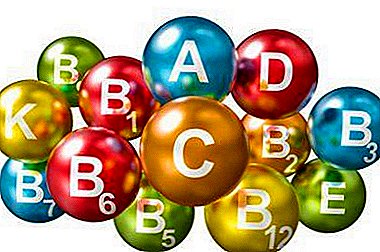 Vitamin A - 203 micrograms;
Vitamin A - 203 micrograms;- Vitamin B1 - 0.09 milligram;
- B2 - 0.17 mg;
- B6 - 0.15 mg;
- B9 - 106 µg;
- vitamin C - 13.4 mg;
- Vitamin PP - 1.77 mg;
- zinc - 1, 08 mg;
- manganese - 1, 12 mg;
- copper - 0,24 mcg;
- phosphorus - 60 mg;
- sodium, 30 mg;
- iron - 11.88 mg;
- magnesium 64 mg;
- calcium - 199 mg;
- potassium - 457 mg.
What is better and more useful?
The chemical composition of both plants makes it possible to say with confidence: both mint and lemon balm are very useful plants, because of their medicinal properties they are officially considered medicinal herbs, and doctors advise their patients to drink this or that herbal tea or tea.
Melissa use:
- in the treatment of nervous disorders;
- depression;
- effects of stress;
- insomnia;
- for skin diseases;
- chronic diarrhea;
- flatulence;
- nausea.
Mint, as an independent medicine, and as part of other drugs, helps to fight:
- with inflammatory processes of internal organs;
- with hypertension;
- fatigue;
- apathy;
- infectious diseases;
- heartburn;
- abdominal distention;
- problems with the heart and blood vessels.
It has anti-inflammatory, diuretic, antispasmodic properties.
Since peppermint has a wider range of positive effects on the human body, many doctors find it more useful.
The difference of these two herbs is in the action that they can have on the body.: Mint perfectly tones up, and Melissa, on the contrary, is an excellent sedative.
Harm and contraindications
Mint
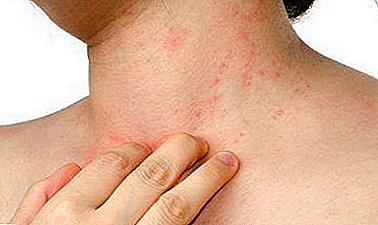 In mint overdose, all sorts of allergic reactions can occur (skin rash, difficulty breathing, redness of the skin and itching), severe headache is possible.
In mint overdose, all sorts of allergic reactions can occur (skin rash, difficulty breathing, redness of the skin and itching), severe headache is possible.- Mint can not be used by anyone who is worried about varicose veins, hypotension, problems with conceiving a child, and a tendency to allergies.
- It is not recommended that plants be introduced into the diet of children who are nursing mothers, it is necessary to be careful with mint and pregnant women.
- The plant has a negative effect on male potency.
Melissa
- Side effects of lemon balm are manifested in the form of allergic rashes and inhibited consciousness and reaction, lethargy, drowsiness.
- Therefore, it is categorically impossible to use those people whose profession requires high concentration of attention (driver, pilot, dispatcher, etc.), as well as those who suffer from reduced pressure.
- Melissa should not be abused by men, as this may adversely affect their genital function.
How are contraindications and possible harm?
The length of the list of side effects in case of excessive use of the plant and contraindications unambiguously it can be concluded: the mint should be approached more carefully than to Melissa. Both mint and lemon balm are dangerous for those who suffer from low blood pressure.; it is also better not to abuse the herbs of men, so that after not have problems with sex. It is important to remember that any treatment has a positive effect if it is performed with the mind, without extremes and excesses.
Application area
What is the difference between them?
Melissa is more universal in cosmetology.:
- It is suitable for the care of all types of skin of the face, hands and feet;
- It is often used in the complex treatment of hair and scalp.
But mint is used only for the care of oily skin. Mint is an excellent flavoring, it is often used in household chemicals, adding pleasant aromatic notes to air fresheners, dishwashing detergents, toothpastes and rinses.
General
 Both herbs are widely used in medicine, pharmaceuticals, cooking, cosmetology. both fresh and dried. Both mint and lemon balm are part of many drugs, but only with different dosages depending on the desired effect.
Both herbs are widely used in medicine, pharmaceuticals, cooking, cosmetology. both fresh and dried. Both mint and lemon balm are part of many drugs, but only with different dosages depending on the desired effect.
These herbs miraculously can have a beneficial effect on the condition of the hair and scalp.
Without them, it is impossible to imagine the exquisite dishes of many restaurants, the menu of which would be incomplete without tea with mint and melissa.
Growing up
Mint should be planted in well-lit areas., she needs constant care and systematic watering. This plant does not like sandy soil. It is propagated most often by seeds or cuttings, when transplanting into open ground the distance between the bushes should be about 30 cm. Melissa is less demanding to care. She does not tolerate excessive moisture (for the season it can be watered only a few times), she likes scattered sunlight or partial shade.
When planting in open ground, the soil in the area is usually mixed with sand, and the distance between the bushes should not be less than 40 cm, since the plant can actively grow. Propagated lemon balm:
- division of the bush;
- seeds;
- layering;
- cuttings.
Both of these herbs can be grown indoors on the windowsill, the method of making spices is also similar: they are dried in a dark place, and then crushed and stored in a sealed package, they absolutely do not tolerate frosts.
Mint and lemon balm can perfectly get along together on one site.
There is an opinion that such a neighborhood is dangerous, because plants can pereopylich each other, and then their taste will be spoiled. Experienced gardeners strongly disagree with such an opinion. The fact is that these herbs are not different species, but different genera of the same family, therefore, natural hybridization of this level is impossible.
Interchangeability
 Since plants have different tastes, replacing one with another when cooking is akin to a taste experiment.
Since plants have different tastes, replacing one with another when cooking is akin to a taste experiment.
Some cooks still dare to do this, for example, in the "Mojito" or lemonade often instead of mint put lemon balm.
It is necessary to do this only in extreme cases: mint is more fragrant and sweet, lemon balm has a spicy-tart taste.
If you put lemon balm instead of mint in dessert, then it is quite possible that he will taste bitter, because it is sometimes replaced with allspice.
Is it possible to combine these two plants?
Mint and lemon balm can successfully be components of the herbal collection - tea or decoction, used with benefit to the body, for example, for weight loss. Naturally, they will then be more useful, as they will combine all the positive properties of these two plants.
Mint and lemon balm - completely different plants, although both have a wide range of beneficial properties and uses. Knowing their differences, it will be difficult to harm their own body by their incorrect use for medicinal purposes and use in cosmetology.


 Vitamin A - 203 micrograms;
Vitamin A - 203 micrograms; In mint overdose, all sorts of allergic reactions can occur (skin rash, difficulty breathing, redness of the skin and itching), severe headache is possible.
In mint overdose, all sorts of allergic reactions can occur (skin rash, difficulty breathing, redness of the skin and itching), severe headache is possible.